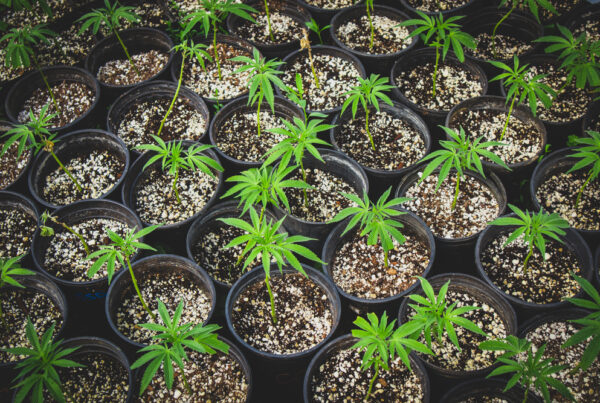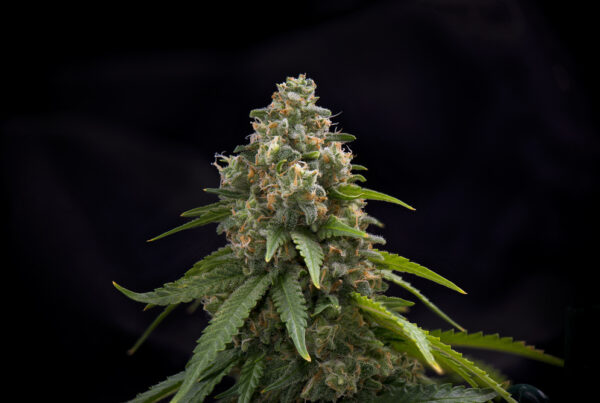Cannabis has been a topic of much discussion and debate in recent years, particularly when it comes to its potential therapeutic benefits. While most people are familiar with cannabinoids like THC and CBD, there is another group of compounds that play a crucial role in the effects of cannabis – terpenes.
In this blog post, we will delve into the world of cannabis terpenes and explore their effects on the human body. We will uncover the different types of terpenes found in cannabis, their influence on aroma and flavor, and how they interact with cannabinoids to produce what is known as the “entourage effect.”
Furthermore, we will examine the potential health effects and therapeutic benefits of cannabis terpenes. From their potential anti-inflammatory and pain-relieving properties to their possible anti-anxiety and mood-enhancing effects, terpenes have shown promise in various areas of health and wellness. We will also discuss emerging research on other potential health benefits that terpenes may offer.
However, it’s important to approach the use of cannabis terpenes with caution. We will explore important considerations when it comes to strain selection, dosage, and administration methods. Additionally, we will discuss possible side effects that may arise from the use of cannabis terpenes.
Whether you are a cannabis enthusiast or simply curious about the potential benefits of terpenes, this blog post will provide you with a comprehensive understanding of cannabis terpenes and their effects. So, let’s dive in and explore the fascinating world of cannabis terpenes together.

Understanding the Basics: What are Cannabis Terpenes
Terpenes are a diverse group of organic compounds that are naturally produced by a wide range of plants, including cannabis. In the context of cannabis, terpenes are responsible for the distinct aroma and flavor profiles exhibited by different strains. These aromatic compounds are synthesized in the sticky resin glands of the cannabis plant, known as trichomes, along with cannabinoids like THC and CBD.
Terpenes are not unique to cannabis; they are found in various plants and have been used for centuries in traditional medicine and aromatherapy. However, the specific combination and concentration of terpenes in cannabis strains contribute to the unique effects and therapeutic potential of each strain.
The chemical structure of terpenes consists of repeating units of a molecule called isoprene. Depending on the number of isoprene units, terpenes can be classified as monoterpenes (two isoprene units), sesquiterpenes (three isoprene units), diterpenes (four isoprene units), and so on.
What sets terpenes apart is their ability to easily evaporate at room temperature, releasing their aromatic compounds into the air. This is why you can smell the distinctive scents of cannabis strains even before consuming them. The presence and concentration of specific terpenes in a strain determine its unique scent profile.
Terpenes also interact with other compounds found in cannabis, such as cannabinoids, in a synergistic manner. This interaction is believed to contribute to the overall effects experienced when consuming cannabis, a phenomenon known as the “entourage effect.” Understanding the basics of cannabis terpenes is essential for comprehending their effects on the human body and the potential therapeutic benefits they may offer.
Types of Cannabis Terpenes
Cannabis is a treasure trove of terpenes, with hundreds of different terpenes identified in various strains. Each strain carries a unique combination and concentration of terpenes, contributing to its distinct aroma, flavor, and effects. In this section, we will explore some of the most common and well-known terpenes found in cannabis.
Myrcene
Myrcene is one of the most abundant terpenes found in cannabis. It is also present in other plants like hops, lemongrass, and mangoes. Myrcene is known for its earthy, musky, and herbal aroma. It is believed to have sedative effects and may contribute to the “couch-lock” sensation often associated with indica strains. Myrcene also has potential anti-inflammatory and pain-relieving properties.
Limonene
Limonene is a terpene that gives citrus fruits their characteristic scent. It is commonly found in strains with uplifting and energizing effects. Limonene is believed to have mood-enhancing properties and may help reduce stress and anxiety. Additionally, it has shown potential as an antimicrobial and anti-inflammatory agent.
Caryophyllene
Caryophyllene is a unique terpene that acts as both a terpene and a cannabinoid, as it can interact with the body’s endocannabinoid system. It has a spicy and peppery aroma and is found in various plants, including black pepper and cloves. Caryophyllene is known for its potential anti-inflammatory and analgesic properties. It may also have potential benefits for anxiety and depression.
Pinene
Pinene is the terpene responsible for the distinctive scent of pine trees. It is found in high concentrations in strains like Jack Herer and OG Kush. Pinene is believed to have energizing and uplifting effects and may enhance focus and alertness. It also has shown potential as an anti-inflammatory and bronchodilator.
Humulene
Humulene is commonly found in hops, giving beer its characteristic aroma. It has an earthy and woody scent and is believed to have potential anti-inflammatory properties. Humulene may also act as an appetite suppressant and is often found in strains associated with weight loss.
These are just a few examples of the diverse range of terpenes found in cannabis. Each terpene has its own unique characteristics and potential effects on the human body. The combination and concentration of terpenes in a particular strain contribute to its overall aroma, flavor, and potential therapeutic benefits. Understanding the different types of cannabis terpenes is essential for choosing strains that align with your desired effects and preferences.
The Role of Terpenes in Cannabis
Terpenes play a crucial role in the overall effects and therapeutic potential of cannabis. In this section, we will explore the various ways in which terpenes contribute to the cannabis experience.
Influence on Aroma and Flavor
One of the most noticeable aspects of cannabis is its distinct aroma and flavor profiles. Terpenes are primarily responsible for these characteristics. Each terpene carries its own unique scent, ranging from fruity and citrusy to earthy and spicy. When combined in different ratios, terpenes create the diverse range of aromas found in various cannabis strains.
The sense of smell is closely linked to our emotions and can evoke specific moods or memories. The terpenes present in cannabis can trigger these olfactory responses, influencing our overall experience and perception of the strain. For example, strains high in limonene may give a citrusy aroma that can uplift mood, while strains rich in myrcene may have a musky scent associated with relaxation.
Interaction with Cannabinoids
Terpenes not only contribute to the aroma and flavor of cannabis but also interact with cannabinoids, such as THC and CBD, in what is known as the “entourage effect.” This synergistic interaction between terpenes and cannabinoids is believed to enhance the overall effects and therapeutic potential of cannabis.
Terpenes can influence how cannabinoids bind to receptors in the endocannabinoid system, potentially altering the intensity and duration of the effects. For example, the presence of the terpene myrcene is thought to enhance the permeability of cell membranes, allowing for increased absorption of cannabinoids like THC. On the other hand, terpenes like caryophyllene may act as selective agonists for certain cannabinoid receptors, further modulating the effects.
The ‘Entourage Effect’
The concept of the entourage effect suggests that the combined presence of terpenes and cannabinoids creates a more significant impact than each component alone. It implies that the full potential of cannabis cannot be solely attributed to individual compounds but rather to the collective action of all the compounds present in the plant.
Terpenes are believed to contribute to the entourage effect by influencing the way cannabinoids interact with our body’s receptors and systems. The specific combination and concentration of terpenes in a strain can significantly impact the overall experience and effects felt by the consumer.
Understanding the role of terpenes in cannabis is essential for appreciating the complexity of the plant and its potential benefits. By considering the interplay between terpenes and cannabinoids, we can better comprehend the nuances of different strains and make informed choices based on our desired effects and preferences.

Health Effects and Therapeutic Benefits of Cannabis Terpenes
Cannabis terpenes are not only responsible for the aroma and flavor of different strains but also hold potential health effects and therapeutic benefits. In this section, we will explore some of the known health effects and therapeutic properties associated with cannabis terpenes.
Potential Anti-Inflammatory and Pain-Relieving Properties
Several terpenes found in cannabis have demonstrated potential anti-inflammatory and analgesic properties. For example, the terpene beta-caryophyllene has shown promise in reducing inflammation and pain by interacting with the body’s endocannabinoid system. It may work as a selective agonist for cannabinoid receptors, particularly the CB2 receptors, which are primarily associated with immune function and inflammation.
Other terpenes, such as myrcene and limonene, have also exhibited anti-inflammatory effects in preclinical studies. These terpenes may contribute to the overall pain-relieving properties of certain cannabis strains.
Possible Anti-Anxiety and Mood-Enhancing Effects
Certain terpenes found in cannabis may have potential anti-anxiety and mood-enhancing effects. For example, the terpene limonene has shown promise in reducing anxiety and improving mood. It may act as a serotonin-norepinephrine reuptake inhibitor, similar to some antidepressant medications.
Another terpene, linalool, commonly found in lavender, has demonstrated anxiolytic and sedative properties. It may contribute to the calming effects of certain cannabis strains and potentially aid in managing anxiety and stress.
Emerging Research on Other Health Benefits
While more research is needed, there is growing interest in exploring the potential health benefits of various cannabis terpenes. Some studies suggest that certain terpenes, such as pinene and terpinolene, may have antimicrobial properties and could potentially be used in the development of new antimicrobial agents.
Additionally, terpenes like limonene and linalool have been studied for their potential anti-cancer properties. These terpenes may exhibit cytotoxic effects on cancer cells and could be explored further as part of cancer treatment strategies.
It’s important to note that while these studies show promising results, more research is needed to fully understand the therapeutic potential of cannabis terpenes. The effects may vary depending on the specific terpene, its concentration, and the individual’s unique biology.
By considering the potential health effects and therapeutic benefits of cannabis terpenes, individuals may be able to make more informed choices when selecting strains that align with their desired wellness goals. However, it is always advisable to consult with a healthcare professional before incorporating cannabis terpenes into a health or treatment regimen.
Considerations When Using Cannabis for its Terpenes
When using cannabis for its terpenes, there are several important considerations to keep in mind. From strain selection to dosage and administration methods, understanding these factors can help optimize your experience and ensure safety. In this section, we will explore key considerations when using cannabis for its terpenes.
Strain Selection
Choosing the right strain is crucial when targeting specific terpenes and their effects. Different strains have varying terpene profiles, which influence the aroma, flavor, and potential therapeutic benefits. Understanding the terpene composition of a strain can help you select one that aligns with your desired effects.
Researching strain profiles and consulting knowledgeable budtenders or medical professionals can provide valuable insights. Consider factors such as the dominant terpenes in a strain and their reported effects. Experimentation may also be necessary to find the strains that work best for you.
Dosage and Administration
Determining the appropriate dosage and administration method is essential for a positive and safe experience. Start with a low dose and gradually increase if needed, as terpenes can have potent effects in conjunction with cannabinoids. It is recommended to follow the product labeling or consult a healthcare professional for guidance.
Various administration methods are available, including smoking, vaping, edibles, and topicals. Each method may influence the effects and onset time. For example, smoking or vaping may provide quicker effects, while edibles offer a more prolonged and delayed onset. Consider your preferences, desired effects, and any potential health considerations when selecting an administration method.
Possible Side Effects
While cannabis terpenes are generally well-tolerated, it’s important to be aware of possible side effects. Some individuals may experience adverse reactions, including dry mouth, dry eyes, dizziness, or heightened anxiety. These effects can vary depending on the terpenes present in the strain and individual sensitivity.
If you experience any discomfort or unwanted side effects, it’s advisable to discontinue use and consult a healthcare professional. They can provide guidance and support in managing any adverse reactions and help you find alternative options if needed.
Legal Considerations
Before using cannabis for its terpenes, it is crucial to understand the legal considerations in your jurisdiction. Cannabis laws vary across countries, states, and regions, ranging from full legalization to strict prohibition. Familiarize yourself with the local regulations to ensure compliance and avoid any legal consequences.
Furthermore, it’s important to obtain cannabis products from reputable sources that adhere to quality and safety standards. This helps minimize the risk of contamination or exposure to harmful substances.
By considering these factors when using cannabis for its terpenes, you can maximize the benefits and minimize any potential risks. Always prioritize your safety and consult professionals when necessary to make informed decisions about strain selection, dosage, administration, and legal compliance.






